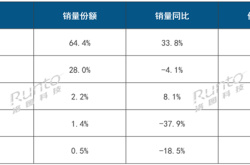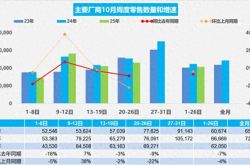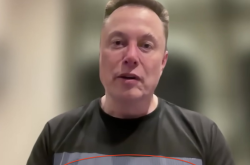Small-Cap, High-Interest Consumer Electronics Concept Stocks Unveiled (List)
![]() 02/05 2025
02/05 2025
![]() 629
629
The consumer electronics industry witnessed a flurry of positive news leading up to the Spring Festival.
Firstly, mobile phones, tablets, and smartwatches (or bracelets) were included for the first time in the scope of national subsidies, with these subsidies taking effect across regions on January 20. The specifics are as follows: For products with a single sales price not exceeding 6,000 yuan, a subsidy of 15% of the final sales price will be provided, with each consumer eligible for one subsidized product per category, with each subsidy capped at 500 yuan.
Secondly, the long-term growth potential fueled by AI terminal innovation is poised to propel the consumer electronics industry into a new growth phase. Cinda Securities believes that the rapid industrialization of humanoid robots could signal a second growth engine for consumer electronics enterprises. Additionally, the emergence of new products like AI smart glasses will open up new market opportunities for the optical and optoelectronic industries.
Amidst this wave of good news, how will the consumer electronics supply chain evolve in 2025?
01. Dividends and Challenges Coexist
The nationwide smartphone subsidy policy, implemented from January 20, 2025, has emerged as the hottest topic in the recent consumer electronics market. This policy has significantly boosted consumer demand in the short term, particularly for mid-to-high-end models priced between 3,000 and 5,000 yuan. According to the China Electronics Enterprise Association, as of 10:00 am on January 22, mobile phone sales in provinces and cities where national subsidies have been launched have surged by 200% compared to the previous month.
From a supply chain perspective, the subsidy policy has accelerated the replacement cycle, especially for mid-to-high-end models.
In the short term, national subsidies are expected to spur a surge in shipments within the consumer electronics industry. Ethan Qi, Deputy Director of Counterpoint, predicts that mobile phone shipments in the Chinese market during the first quarter of 2025 will reach 75 million to 80 million units, with year-on-year growth exceeding 10%, and actual sales may even exceed 80 million units.
CCTV News reports that Jin Xiaoqing, an engineer at the Policy and Economic Research Institute of the China Academy of Information and Communications Technology, also believes that compared to automobiles and home appliances, consumer electronics entering the "national subsidy" program will have at least two distinct impacts: Firstly, consumer electronics possess a stronger discretionary consumption attribute, and under the same "national subsidy" intensity, the pull effect on consumer electronics is more pronounced, potentially driving an increase in consumer electronics sales of over 300 billion yuan.
However, in the long run, the consumer electronics supply chain also faces challenges. While the subsidy policy has performed well in the short term, promoting inventory turnover and making room for new product launches, the long-term impact of these short-term dividends on the market structure remains uncertain. Ethan Qi predicts that China's smartphone market shipments for the entire year of 2025 are expected to grow by only about 3%, reaching 284 million units.
He emphasized, "In the long run, market growth will continue to rely on the driving forces of consumer demand, technological innovation, and branding strategies." Smartphone manufacturers must seize the policy dividend window, optimize strategic layouts, and accelerate technological innovation to gain a competitive edge in future markets and tap into new growth avenues.
02. Unveiling Low-Market-Cap, High-Interest Consumer Electronics Concept Stocks
From a capital market perspective, the performance of consumer electronics since the beginning of the year has been nothing short of impressive.
After surging by nearly 19% in 2024, the electronics index has continued to lead gains in 2025, with the component index under it rising by more than 3%. Other electronics indices, including the consumer electronics index, have also ranked among the top performers across various industries.
In response to market changes, a batch of consumer electronics concept stocks with lower market capitalizations and higher turnover rates have demonstrated greater flexibility. Among them, there are a total of 13 consumer electronics stocks with a market capitalization of less than 5 billion yuan and an average daily turnover rate exceeding 5% since January (as of January 21).

Specifically, stocks such as Huiwei Intelligence, Yabaoxuan, and Weimao Electronics all have market capitalizations below 2 billion yuan. Huiwei Intelligence is a design house (IDH) and ODM manufacturer dedicated to providing embedded software and hardware solutions, offering professional product design services and manufacturing for renowned brand owners and OEM customers.
In terms of turnover rates, Xianying Technology boasts the highest average daily turnover rate of nearly 22% since January, ranking first. The company is a professional ODM supplier of computer, communication, and consumer electronics (3C) peripheral products and components, primarily engaged in the research, development, production, and sales of signal conversion and expansion products. Additionally, stocks like Maoshuo Power, Xinyin Electronics, Yingli Co., Ltd., and Zhuoyi Technology have average daily turnover rates exceeding 15% since January.
Furthermore, stocks with multiple popular themes have also performed well. Data reveals that among the aforementioned 13 stocks, Zhuoyi Technology tops the list with 21 concepts, including popular themes such as AI glasses, robots, virtual reality, industrial interconnection, chips, and Huawei HarmonyOS.
Derun Electronics, Maoshuo Power, Yingtong Communications, Weimao Electronics, and other stocks each have more than 10 concepts. Among them, Derun Electronics features popular themes such as 5G, copper cable high-speed connectivity, and Apple concept; while Maoshuo Power encompasses themes like photovoltaics, foldable screens, and green power.
- End -








